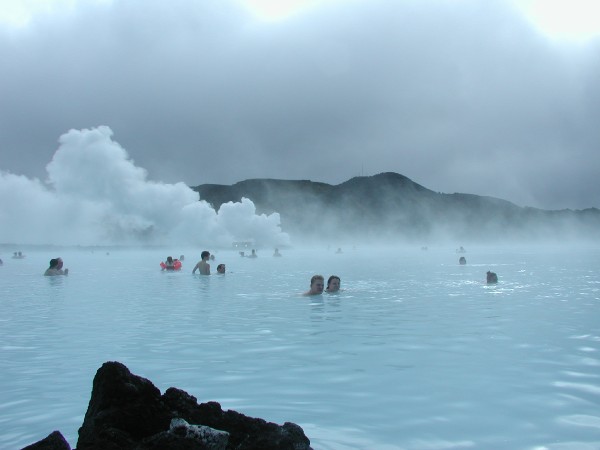The following post is by Earl Killian, guest blogger at Climate Progress.
—–
Iceland has long been touted as a hydrogen economy pioneer. So it is quite shocking that electric vehicles — both plug-in hybrids and pure battery electric cars — crowded out hydrogen at a recent ReykjavÃk conference.
Iceland is blessed with abudant hydro-electric opportunities, and currently generates 6.5 TWh (Terawatt hours, which is equal to a million megawatt hours) per year, with the potential of 25-30 TWh per year. Geothermal currently generates 1.3 TWh per year, with a potential of 15 TWh per year over the next 100 years. Almost 100 percent of electricity in Iceland comes from these two sources. Geothermal energy is also used for space heating.

Yet 30 percent of total energy consumption still comes from oil, which is primarily used in transportation (cars and boats). Iceland seeks to get rid of its remaining fossil-fuel dependence, and for a while it was intensely focused on becoming one of the first hydrogen economies. It installed a hydrogen fuel station, and experimented with fuel-cell buses. Those buses are gone now, so it is appropriate to ask what was on Iceland’s Driving Sustainably ’08 conference agenda last week, concentrating on talks related to either electric or fuel cell vehicles.
The President of Iceland, Ólafur Ragnar GrÃmsson, opened the conference on Thursday monring with an address in which he said, “In the next five years or so we have to lay the fundamental groundwork of a comprehensive transformation of our traffic system, our transport, how we use the roads, how we move from one place to another, whether it is a household or a city or a country.”
Just before Thursday’s lunch, Yet-Ming Chiang, co-founder A123 Systems and MIT Professor of Materials Science & Engineering spoke on The Coming Electric Vehicle Revolution: Impact of Materials Advances on Automotive Batteries. During lunch, the program lists, “Test drive of selected EVs available outside.” Immediately after lunch came two electric vehicle talks: Wind Generated Electricity, Second Generation Biofuels, and Better Place Denmark: Electric Cars and Recharging Infrastructure in Denmark, and Design & Potential of High Performance Electric Vehicles. Perhaps they were just trying to get the EVs out of the way? After coffee came CO2 Free Power and Plug-in Hybrids in the Nordic Countries, and The Next Generation Utility: Blending Energy Efficiency, Renewable Generation and Plug-in Vehicles to Eliminate Carbon Emissions. That was nearly a full day devoted to EVs, with hydrogen nowhere in sight. Surely day 2 must have been different.
Friday morning saw Present Status & Future Prospects of Electric Vehicles in China and The i MiEV Electric Car, given by Tetsuro Aikawa, Managing Director In Charge of Product Development at Mitsubishi Motors Corporation. Well, perhaps there were some hydrogen fuel cell vehicles at brunch? No, the program says again “Test drive of selected EVs.”
Friday afternoon kicked off with a keynote, Better Place: A Mobility Operator Enabling EV Mass Adoption. Finally the hydrogen team gets up to the plate, with Shell presenting Shell Future Fuels Scenarios until 2020: Electricity & Hydrogen for Transport. Wait, even the hydrogen team is talking about electricity?
Did the afternoon then turn to hydrogen? Next up was Myths and truths about electric cars, followed by The Death & Resurrection of the Electric Car: Carmakers, Big Oil, Environment & Battery Developments, by Chris Paine, Director of Who Killed The Electric Car? After a panel discussion, Iceland’s Össur Skarphéðinsson, Minister of Industry gave the last presentation Electricity for Transport in Iceland, which was followed by concluding remarks, and then “Free Time & EV testing.”
With only Shell waving the hydrogen flag, it was a essentially a shutout. It appears that Iceland has cooled toward hydrogen, and is shifting attention to electric vehicles. The New York Times blogged Iceland’s Future Could Be Electric, which reported:
“Hydrogen cars are not mass produced anywhere,” said Teitur Torkelsson, managing partner of FTO Sustainable Solutions. “But a majority of car makers are announcing electric cars to be produced in the next four or five years, so it becomes a big part of our energy solutions.” Even the country’s 840-mile-long ring road could theoretically be covered with just 14 fast-charging stations. The Icelandic government is expected to ease the way for the E.V.’s by removing import taxes on them, as was recommended by a Finance Ministry working group.
This post was created for ClimateProgress.org, a project of the Center for American Progress Action Fund.


